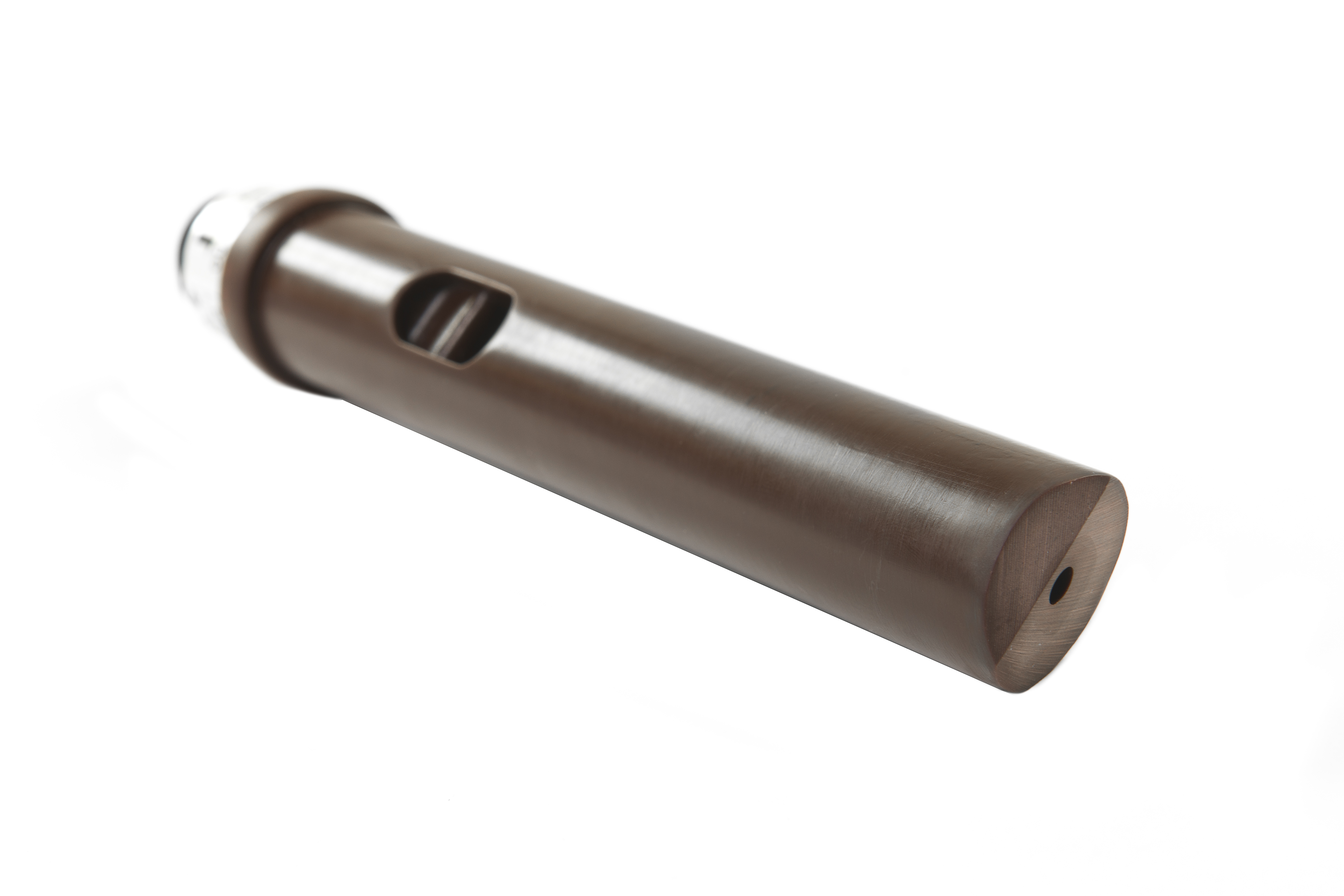为什么测量电导率?
它可以用作衡量水质的指标,经济且维护量低。水质好、污染物少的溶液导电性低。电导率的维护远少于pH值和最小标定,用于锅炉给水、反渗透和除盐应用。
由于电导率在一定程度上随过程中离子浓度的增加而增加,因此我们可以用它来与溶液(如酸或碱)的%浓度值相关联。同样,由于电导率是非特异性的,因此%浓度一次只能基于其中一种化学物质测量,而不能根据混合化学物测量。
测量电导率有两种基本传感器类型:接触式和电感式(环形、无电极)。
使用接触式传感器时,通过向溶液中浸入的传感器电极(共同影响电极常数)施加交流电并测量产生的电压来测量导电性。溶液用作传感器电极之间的导电体。
电导率测量的准确度可能受以下因素的影响:
- 极化
- 污染:2极电池电极表面上的沉积物或涂层对极化误差具有类似的影响,如电导率读数低于通常值。使用4极电导池可以避免这些影响。
- 电缆电阻:电缆电阻会导致测量误差,必须予以考虑。
- 温度:电导率测量与温度有关,如果温度升高,电导率会增加。
详细介绍
 |
 |
 |
|
| 型号代码 | SC42 大口径型 | SC4A(J) | SC42 小口径型 |
|---|---|---|---|
| 电极常数 | 0.01/cm; 0.1/cm; 1.0/cm | 0.02/cm; 0.1/cm | 0.02/cm; 0.1/cm; 1.0/cm |
| 量程范围 | 0.02-2,000 µS/cm; 0.2-20,000 µS/cm; 2.0-200,000 µS/cm | 0.04-400 µS/cm; 0.2-2,000 µS/cm | 0.04-400 µS/cm; 0.4-2,000 µS/cm; 4.0-5,000 µ/cm |
| 温度元件 | Pt1000 | Pt1000 | Pt1000 |
| 额定压力 | 10 bar/142 PSIG | 10 bar/142 PSIG | 7 bar/100 PSIG |
| 最高温度 | 150°C/302°F | 110°C/230°F | 100°C/212°F |
| 安装接口 | 需要FD40、FS40或FF40支架 | 3/4" NPT接头;1"、1.5"或2" Tri-Clamp;可伸缩 | 3/4" NPT接头;1"、1.5"或2" Tri-Clamp |
| 整体电缆 | 无 | 有 | 有 |
| 结构材质 | 316不锈钢 | 316不锈钢或钛 | 316不锈钢或钛 |
| 设计类型 | 双电极 | 双电极 | 双电极 |
参考
Process liquid analyzers such as pH meters, conductivity meters, ORP meters, and density meters play an important role at electrolysis plants in the control of concentrations of various process solutions. This requires both precision and stability under harsh conditions that include highly corrosive substances, high temperatures, and many impurities.
Seawater leak detection is the post-condensation water quality management processes. Damage to the ion exchange resin, which deionizes the supplied water, is also monitored during this process, and both of these applications are executed by a conductivity analyzer. (AN10D01P01-01E)
To defray energy costs, many industrial plants have their own boilers to generate steam in order to produce a portion of their energy needs. In addition to generating power, the steam may also be used directly in plant processes or indirectly via heat exchangers or steam jacketed vessels.
There are a number of suppliers of oil and fat products used for edible purposes. These products include, but are not limited to olive oil, peanut oil, soybean oil, sunflower oil, lard, shortening, butter, and margarine. The raw materials for these products include animal by-products, fleshy fruits (palm and olive), and oilseeds.
Industry:Food and Beverage
Reverse osmosis (RO) is a separation process that uses pressure to force a solution through a membrane that retains the solute on one side and allows the pure solvent to pass to the other side. More formally, it is the process of forcing a solvent from a region of high solute concentration through a membrane to a region of low solute concentration by applying a pressure in excess of the osmotic pressure.
下载
技术信息
- Conductivity Analyzer Selection Guide (871 KB)
- Contacting Conductivity sensor selection guide (1.6 MB)
- SENCOM 4.0 Platform: Grounding (3.6 MB)
认证信息
- EU_UK Declaration of conformity SC49 2022-10-03 (114 KB)
- DEKRA 14ATEX0074X-Issue 2 -E SC4A, SC42 and SX42 (309 KB)
- KCs_SC42(21-KA4BO-0419X) (156 KB)
- IECEx_DEK_14_0032X_Issue 1 SC4A, SC42 and SX42 (986 KB)
- IECEx_DEK_14_0032X_Issue 0 SC4A, SC42 and SX42
- IECEx_DEK_14_0032X_Issue 0 SC4A, SC42 and SX42
- KCs_SC42(21-KA4BO-0420X) (157 KB)
- DEKRA 14ATEX0074X-Issue 1 SC4A, SC42 and SX42
- TS_SC4A SC42,SX42 (1.7 MB)
- EACEx_SC4A SC42,SX42 (3.7 MB)
- PESO_SC4A SC42,SX42 (98 KB)
- Ex NEPSI_SC4A SC42,SX42 (917 KB)
- EU_UK Declaration of conformity SC42 2022-10-03 (158 KB)
- EU_UK Declaration of conformity SC41 2022-10-03 (125 KB)
- EU_UK Declaration of conformity SC4A 2022-10-03 (166 KB)
- SC42/SX42/SC4A ATEX/ IECEx (2.3 MB)
- FM20CA0062X FU20, FU24, SC25V, SC4A, SC42, SX42 (390 KB)
- FM20US0123X FU20, FU24, SC25V, SC4A, SC42, SX42 (410 KB)
- EAC certificate for sensors (1.8 MB)
视频
Check out what is in the box when you receive Yokogawa epoxy type conductivity sensor SV42-EV15.
想要了解更多的信息,技术&解决方案?
联系我们









